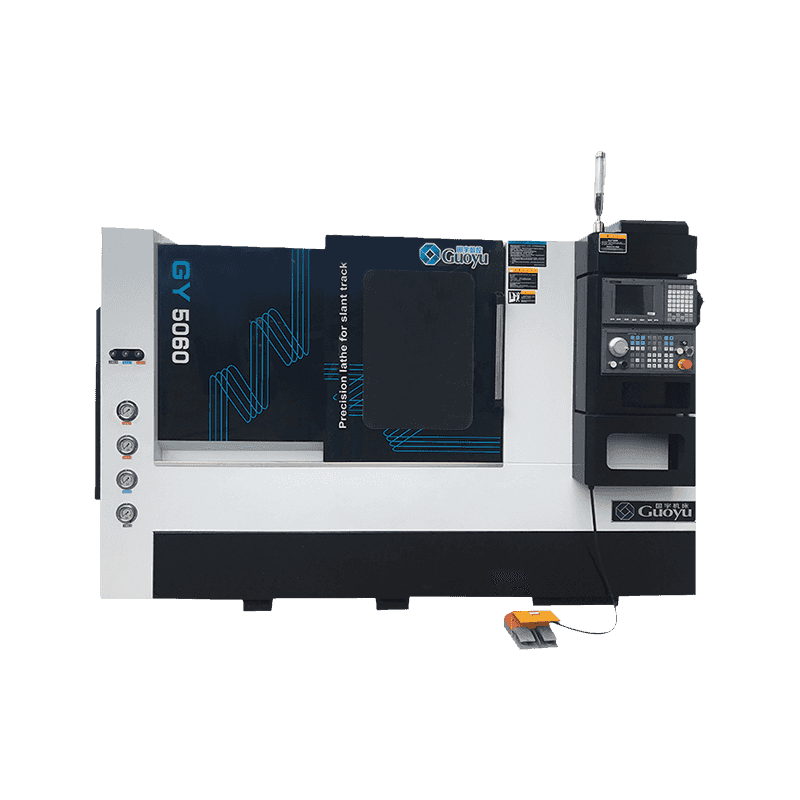How Practical Is The Slant-bed CNC Lathe?
The slant-bed CNC lathe has become a common tool in modern machining industries. Its design and functionality address a range of production requirements, and understanding its practicality requires examining multiple aspects. Dividing the discussion into four parts—efficiency, precision, versatility, and cost-effectiveness—provides a comprehensive evaluation of its utility in industrial settings.

How does a slant-bed CNC lathe improve operational efficiency?
Operational efficiency is a key factor in evaluating the practicality of any machine. The slant-bed CNC lathe offers features that contribute to improved workflow in manufacturing environments:
- Optimized Chip Removal: The slant-bed design allows chips to naturally fall away from the workpiece and tool area. This reduces interruptions caused by chip accumulation and decreases the need for frequent cleaning, maintaining continuous operation.
- Improved Tool Access: The angled bed provides better access to the workpiece for both single and multiple tools. This reduces setup time and allows for faster machining cycles.
- High Spindle Speeds: Many slant-bed CNC lathes support higher spindle speeds, which shortens processing times for certain materials. Faster rotation speeds contribute to reduced production time per unit.
- These features enhance overall productivity, making the slant-bed CNC lathe suitable for operations that require consistent throughput without compromising safety or workflow.
How precise is the machining performance of a slant-bed CNC lathe?
Precision is another important dimension of practicality, particularly in industries where tight tolerances are essential. The slant-bed CNC lathe offers several characteristics that improve accuracy:
- Stable Workpiece Support: The slanted bed provides enhanced rigidity, which minimizes vibration during cutting. Reduced vibration translates to improved dimensional accuracy.
- Consistent Tool Alignment: CNC control ensures repeatable tool positioning, which maintains uniformity across multiple parts. This is particularly valuable for batch production where precision must be consistent.
- Fine Tolerance Machining: The combination of stable bed design and precise CNC control allows operators to achieve fine tolerances required in industries such as automotive, aerospace, and medical equipment.
- The precise performance of the machine ensures reliability and quality, reducing material waste and the need for rework.
How versatile is the slant-bed CNC lathe?
Versatility affects a machine’s practicality by determining the range of applications it can support. Slant-bed CNC lathes provide features that accommodate diverse machining tasks:
- Multiple Tool Operations: These machines often include multiple turrets or tool stations, allowing simultaneous operations such as turning, drilling, and threading. This reduces the need for multiple setups.
- Accommodation of Various Materials: Slant-bed CNC lathes can process metals, plastics, and composites, offering adaptability to different production requirements.
- Customizable Programs: CNC programming enables operators to modify cutting sequences, tool paths, and speeds according to specific part designs, enhancing operational flexibility.
- This versatility allows manufacturers to use a single machine for a wide range of parts, which can reduce the need for additional equipment and simplify the production line.
How cost-effective is the slant-bed CNC lathe?
Cost-effectiveness is a crucial factor when assessing practicality, as it encompasses both initial investment and long-term operational costs:
- Reduction in Labor Costs: Automation reduces the need for manual intervention, allowing a smaller team of operators to manage higher production volumes efficiently.
- Lower Maintenance Requirements: The stable design and fewer moving parts compared to horizontal lathes reduce maintenance frequency, lowering downtime and repair costs.
- Energy Efficiency: The slanted bed design can reduce friction and improve spindle efficiency, slightly lowering energy consumption during extended operation.
- Although the initial investment may be higher than simpler lathes, long-term savings in labor, maintenance, and energy contribute to overall cost-effectiveness, supporting its adoption in industrial settings.
